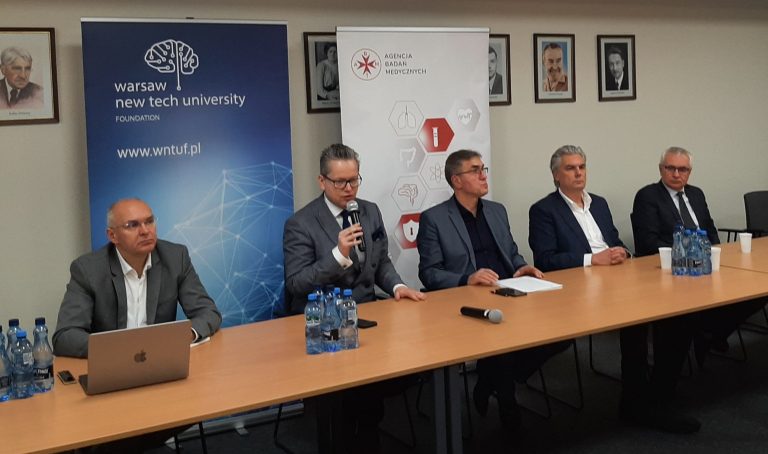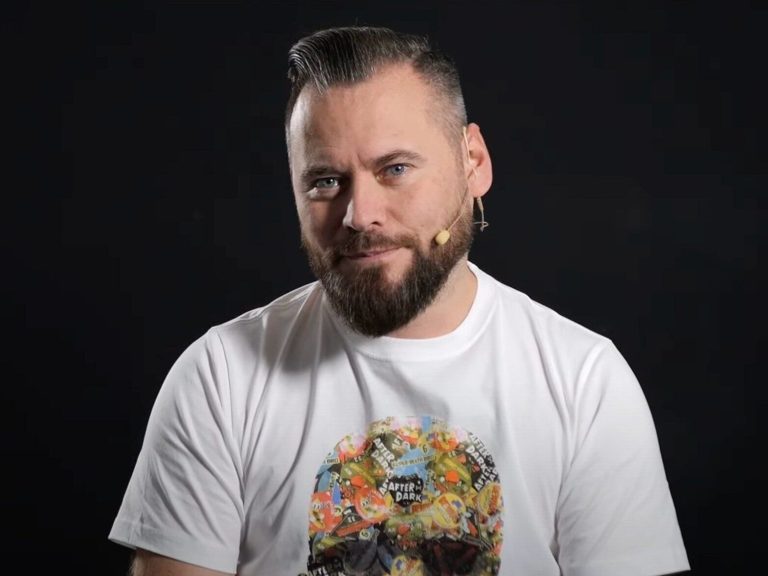There is always an idea at the beginning. Dr. Rogiewicz: Our goal is the Nobel Prize

– I remember the beginnings, when we went to scientific conferences and people looked at us not very favorably, because we were perceived as a business. With our work and achievements, we have proven that what we do has scientific value, says Katarzyna Rogiewicz, PhD.
The Dr Irena Eris Science and Research Center was established in 2001. A team of biologists, pharmacists, chemists, biochemists, biotechnologists and dermatologists work here and conduct advanced research on skin cells and models. Dr. Katarzyna Rogiewicz, deputy director of the Research and Innovation Division at Dr Irena Eris, talks about the research.
Katarzyna Świerczyńska, “Wprost”: Your work is more business or science?
Dr. Katarzyna Rogiewicz: Science is one of the key pillars of our company. It is of particular importance to Dr. Irena Eris, who holds a PhD in pharmaceutical sciences. The Science and Research Center is the implementation of its vision, and the Research and Innovation Division is the “creme de la crème”. I have been working here for 25 years, and the Science and Research Center was established over 20 years ago. Of course, the company functions to achieve business goals, but we never save on our scientific projects. If we have an idea, there is no problem to implement it.
Your scientific achievements include: numerous patent applications and patents. How are ideas for new solutions born?
In the laboratory, we work on various substances and, simply put, we test whether something will work in cosmetics. If something worked on cells, will it work the same in a lotion or cream? This is not always obvious.
We are also looking for substances that are known but have not been used in cosmetics so far. For example, we were the first in the world to use folic acid in cosmetics, and we were one of the first to use vitamin K. So we are looking for new applications for known substances, but we are also looking for the best combinations, we check whether they work synergistically.
Where did the ideas come from? Science is inspiration. We participate in many scientific events, we are up to date with reports from fields such as pharmacy, medicine, biology or biotechnology and many others. We follow what is being said, what appears in publications, but also, as I mentioned, we are looking for innovative solutions ourselves. One of our recent achievements is the discovery of substances in skin cells that act on the channels in the energy centers of cells, i.e. the mitochondria, and the launch of e.g. cosmetics that even out skin tone in people with vitiligo. At that time, we were looking for potassium channel activators, these are channels in cells that, when activated, trigger various processes, including associated with the loss of pigment in the skin.
How are you treated in the scientific community?
It’s very interesting how things have changed over the last 20 years. I remember the beginnings, when we went to scientific conferences and people looked at us not very favorably, because we were perceived as a business. With our work and achievements, we have proven that what we do has scientific value. Our publications are cited by scientists, others turn to us, inviting us to conferences or wanting to, for example, implement their projects with us.
You also cooperate with many research centers.
In Poland, it is the Institute of Experimental Biology named after M. Nenckiego PAN, Warsaw University of Technology, University of Warsaw, Jagiellonian University or Medical University of Lodz. We use their know-how, we use their equipment facilities. We have excellent scientists in Poland, people who specialize in specific research, and we take advantage of that. The effect of this cooperation are both scientific publications and conference reports, as well as, above all, product innovations implemented on the Polish and international markets. On the other hand, we also have a lot of willing students from various fields of study for summer internships, many of them come back to us when they are writing their bachelor’s or master’s theses.
What is the work at the Science and Research Center like?
It all starts with an idea. At the beginning, we conduct laboratory tests on isolated skin cells. If something works as we expect, technologists develop formulas for cosmetics. This is a tedious process, because it may turn out that the recipe makes the substance work differently. We test all mechanisms under conditions in vitro, i.e. “in glass” on isolated cells or substances. The Scientific and Research Center also conducts research aimed at understanding the processes occurring in skin cells under the influence of cosmetics. We learn the mechanisms of action of active substances in cosmetics through research ex vivo. Tests ex vivo is proof that the active ingredients contained in the cosmetic product actually affect the physiology of the skin. Tests ex vivo using full-thickness skin is also used to test the penetration of cosmetic substances into the skin and to determine the structure of the hair surface and external skin cells. When it is confirmed that something works, we test it on ourselves…
wearing?
Yes, and on our families (laughs). When we are satisfied with something and confident in a given product, we proceed to the next stage. Our prototypes are tested by probationers. Their opinion is subjective, which is why they come to our laboratories from time to time, where we check whether the cosmetic really works as we would like, e.g. moisturizes or reduces discoloration. The most modern biomedical equipment from world-class manufacturers is used to assess skin parameters. We measure parameters such as hydration, lubrication, elasticity, smoothness, topography, depth and volume of wrinkles, transepidermal water loss, color, pH, echogenicity of individual skin layers, temperature distribution within specific parts of the body or hair surface structure. And only when these studies are confirmed, we will have another series of studies. These are further microbiological and stability tests, checking whether the packaging will be suitable …
What is the time from idea to market launch?
From a year to several years.
What are you currently working on?
I can’t reveal it, because it’s a secret about products that are supposed to enter the market next year. But speaking of recent achievements, I can mention our pharmacy lines, dedicated to people with psoriasis, atopic dermatitis or vitiligo. These are not drugs, but cosmetics that support the care of sick skin.
You have said many times that your goal is the Nobel Prize…
Yes, our goal is the Nobel Prize. I remember the first time we talked about it out loud, partly with laughter, partly in jest. After a month or two, it turned out that the 2009 Medicine and Physiology Prize was awarded for explaining how telomeres work. Carol Greider and Elizabeth Blackburn discovered an important enzyme in this process, i.e telomerase – ed.). And yet, at the same time, we were conducting research on telomeres. This gave us extraordinary motivation and faith that everything is within our reach. And I must emphasize that our work gives us extraordinary satisfaction, because we can see its specific effects in the form of cosmetics on the shelves.






